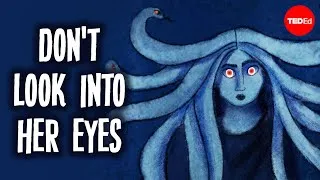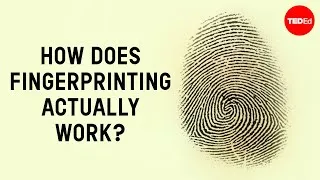The continents are moving. When will they collide? - Jean-Baptiste P. Koehl
412,554 views ・ 2023-03-02
请双击下面的英文字幕来播放视频。
翻译人员: Yip Yan Yeung
校对人员: Jacky He
00:06
In the early 20th century,
0
6961
1627
20 世纪初,
00:08
a meteorologist named Alfred Wegener
noticed striking similarities
1
8588
4379
一位名叫阿尔弗雷德·魏格纳
(Alfred Wegener)的气象学家
00:12
between the coasts
of Africa and South America.
2
12967
3003
发现了非洲和南美洲
海岸之间的惊人相似之处。
00:16
These observations led him to propose
a controversial new theory:
3
16179
3920
这些发现促使他
提出了一个备受争议的新理论:
00:20
perhaps these and many other continents
had once been connected
4
20183
4045
也许这两块大陆及其他大陆
曾经互相联结
00:24
in a single, gigantic landmass.
5
24228
2378
呈一整块巨型陆块。
00:26
Wegener’s Theory of Continental Drift
directly contradicted the popular opinion
6
26939
5172
魏格纳的大陆漂移学说
与普遍观点相悖,
00:32
that Earth’s continents had
remained steady for millennia,
7
32111
3003
即地球上的大陆
千年以来不曾变化,
00:35
and it took almost 50 years
for his advocates
8
35114
3003
魏格纳的支持者
花了差不多 50 年
00:38
to convince the larger
scientific community.
9
38117
2461
说服更广的科学届。
00:40
But today, we know something
even more exciting—
10
40828
2586
时至今日,我们发现了
一个更激动人心的事实:
00:43
Pangea was only the latest
in a long lineage of supercontinents,
11
43790
4838
盘古大陆(Pangea)
只是超大陆历史长河中最新的一段,
00:48
and it won’t be the last.
12
48628
1835
而且它不会是最后一段。
00:50
Continental Drift laid the foundation
for our modern theory of plate tectonics,
13
50713
5297
大陆漂移学说为如今的
板块构造学说打下了基础,
00:56
which states that Earth’s crust
is made of vast, jagged plates
14
56052
4254
即地壳由巨大、参差的板块组成,
01:00
that shift over a layer of partially
molten rock called the mantle.
15
60306
4588
板块会在一层部分熔化的岩石,
称为“地幔”的结构上滑动。
01:05
These plates only move at rates
of around 2.5 to 10 centimeters per year,
16
65269
6006
这些板块移动的速度
仅为每年 2.5 至 10 厘米,
01:11
but those incremental movements
shape the planet's surface.
17
71526
3587
但是这些逐渐剧烈的移动
会改变地表结构。
01:15
So to determine when a new
supercontinent will emerge,
18
75363
3044
如果要判断何时会出现
一块全新的超大陆,
01:18
we need to predict where these plates
are headed.
19
78407
2670
我们先得预估
这些板块移动的方向。
01:21
One approach here is to look
at how they’ve moved in the past.
20
81661
3378
一个方法是观察
它们以前移动的情况。
01:25
Geologists can trace the position
of continents over time
21
85039
3670
地质学家通过测量地球磁场的变化
01:28
by measuring changes
in Earth’s magnetic field.
22
88709
2920
持续追踪着大陆的位置。
01:32
When molten rock cools,
its magnetic minerals are “frozen”
23
92130
3962
熔岩冷却后,其中的磁性矿物
01:36
at a specific point in time.
24
96092
1960
会在某一时间点“冻结”。
01:38
So by calculating the
direction and intensity
25
98136
2836
通过计算某块岩石磁场的
01:40
of a given rock’s magnetic field,
26
100972
2252
方向和强度,
01:43
we can discover the latitude at which
it was located at the time of cooling.
27
103224
4463
我们可以得出它冷却时
所在位置的纬度。
01:48
But this approach has serious limitations.
28
108020
2586
但是这个方法有明显的缺陷。
01:50
For one thing, a rock’s magnetic field
doesn’t tell us the plate’s longitude,
29
110606
4547
其中一点是岩石的磁场
不会展现板块经度的信息,
01:55
and the latitude measurement
could be either north or south.
30
115319
3254
而纬度的测量结果
不是北纬就是南纬。
01:59
Worse still, this magnetic data gets
erased when the rock is reheated,
31
119073
4755
更糟糕的是,岩石再次升温时,
磁场数据就会被抹消,
02:03
like during continental collisions
or volcanic activity.
32
123828
3503
比如大陆碰撞或火山活动时。
02:07
So geologists need to employ other methods
to reconstruct the continents’ positions.
33
127582
5964
因此,地质学家需要采用
其他的方式重现大陆的位置。
02:13
Dating local fossils and comparing them
to the global fossil record
34
133838
4004
追溯当地化石,
将其与全球的化石记录对比,
02:17
can help identifying
previously connected regions.
35
137842
3295
有助于寻出原本相连的地区。
02:21
The same is true of cracks and other
deformations in the Earth's crust,
36
141262
4630
同样的方式也可以应用于
地裂和其他地壳形变现象,
02:25
which can sometimes be
traced across plates.
37
145892
3169
这是能够跨板块研究的。
02:29
Using these tools,
scientists have pieced together
38
149687
3212
科学家们利用这些工具拼凑成了
02:32
a relatively reliable history
of plate movements,
39
152899
3336
一段相对可靠的板块运动历史。
02:36
and their research revealed a pattern
spanning hundreds of millions of years.
40
156402
4379
他们的研究展现了
跨越亿年的板块运动规律。
02:41
What’s now known as the Wilson Cycle
41
161032
2419
我们现在所知的“威尔逊旋回”
(Wilson Cycle),
02:43
predicts how continents
diverge and reassemble.
42
163451
3044
预测了大陆将如何分离、拼合。
02:46
And it currently predicts
the next supercontinent will form
43
166579
3545
它准确地预计下一个超大陆
02:50
50 to 250 million years from now.
44
170124
3420
会在距今 5000 万
至 2.5 亿年后形成。
02:53
We don’t have much certainty
on what that landmass will look like.
45
173836
3545
我们不太确定
这个陆块会是什么形态。
02:57
It could be a new Pangea that emerges
from the closing of the Atlantic.
46
177381
3587
它可能会是一块
源于大西洋收缩的新盘古大陆。
03:01
Or it might result from the formation
of a new Pan-Asian ocean.
47
181260
4338
或者源于一片新泛亚海洋的形成。
03:05
But while its shape and size
remain a mystery,
48
185806
2837
虽然它的形状和面积
依旧是个未解之谜,
03:08
we do know these changes will impact
much more than our national borders.
49
188643
4671
但我们知道这些变化影响的
远不止我们的国境线。
03:13
In the past, colliding plates have caused
major environmental upheavals.
50
193689
5172
在以前,板块碰撞造成了
严重的环境剧变。
03:19
When the Rodinia supercontinent
broke up circa 750 million years ago,
51
199070
5213
罗迪尼亚(Rodinia)超大陆
在大约 7.5 亿年前分解时,
03:24
it left large landmasses
vulnerable to weathering.
52
204283
3462
产生了易受到风化侵蚀的巨型陆块。
03:28
This newly exposed rock absorbed
more carbon dioxide from rainfall,
53
208079
4880
这些刚暴露在空气中的岩石
从降水中吸收了大量二氧化碳,
03:33
eventually removing so much
atmospheric CO2
54
213042
3462
大气里被去除的二氧化碳多到
03:36
that the planet was plunged
into a period called Snowball Earth.
55
216504
4588
地球一下进入了“冰球时期”。
03:41
Over time, volcanic activity released
enough CO2 to melt this ice,
56
221801
4880
随着时间的推移,火山活动
释放出的二氧化碳足以使其融化,
03:46
but that process took another
4 to 6 million years.
57
226681
3920
但是这个过程
经历了 400 到 600 万年。
03:50
Meanwhile, when the next
supercontinent assembles,
58
230768
2920
与此同时,
下一块超大陆的形成
03:53
it's more likely to heat things up.
59
233688
1960
很有可能会造成升温。
03:55
Shifting plates and continental collisions
could create and enlarge
60
235940
4504
板块漂移和大陆碰撞
会产生、扩大
04:00
cracks in the Earth’s crust,
61
240444
1919
地壳上的裂缝,
04:02
potentially releasing huge amounts
of carbon and methane into the atmosphere.
62
242363
4713
可能会向大气释放出
大量碳和甲烷。
04:07
This influx of greenhouse gases
would rapidly heat the planet,
63
247243
4212
温室气体的骤增会迅速使地球升温,
04:11
possibly triggering a mass extinction.
64
251455
2461
并也许会引发一场大灭绝。
04:14
The sheer scale of these cracks would
make them almost impossible to plug,
65
254292
4379
如此规模的地裂是根本无法填补的,
04:18
and even if we could, the resulting
pressure would just create new ruptures.
66
258671
4254
即使我们可以填补,
造成的压强只会增加新的裂缝。
04:23
Fortunately, we have at least 50 million
years to come up with a solution here,
67
263050
4463
好在我们至少还有 5000 万年的
时间想出一个解决办法,
04:27
and we might already be onto something.
68
267722
2168
而且我们可能已经有了一些想法。
04:30
In Iceland, recently conducted trials
were able to store carbon in basalt,
69
270141
5422
在冰岛,最近已经有试验
可以将碳存储在玄武岩中,
04:35
rapidly transforming these
gases into stone.
70
275813
3212
快速将这些气体转化为岩石。
04:39
So it’s possible a global network of pipes
71
279150
2752
那么,如果有一个全球管道网络,
04:41
could redirect vented gases
into basalt outcrops,
72
281902
3879
将排出的气体导入
玄武岩地面岩层,
04:45
mitigating some of our emissions now and
protecting our supercontinental future.
73
285781
4797
我们便能减少一些目前的排放,
保护我们未来的超级大陆。
New videos
Original video on YouTube.com
关于本网站
这个网站将向你介绍对学习英语有用的YouTube视频。你将看到来自世界各地的一流教师教授的英语课程。双击每个视频页面上显示的英文字幕,即可从那里播放视频。字幕会随着视频的播放而同步滚动。如果你有任何意见或要求,请使用此联系表与我们联系。







